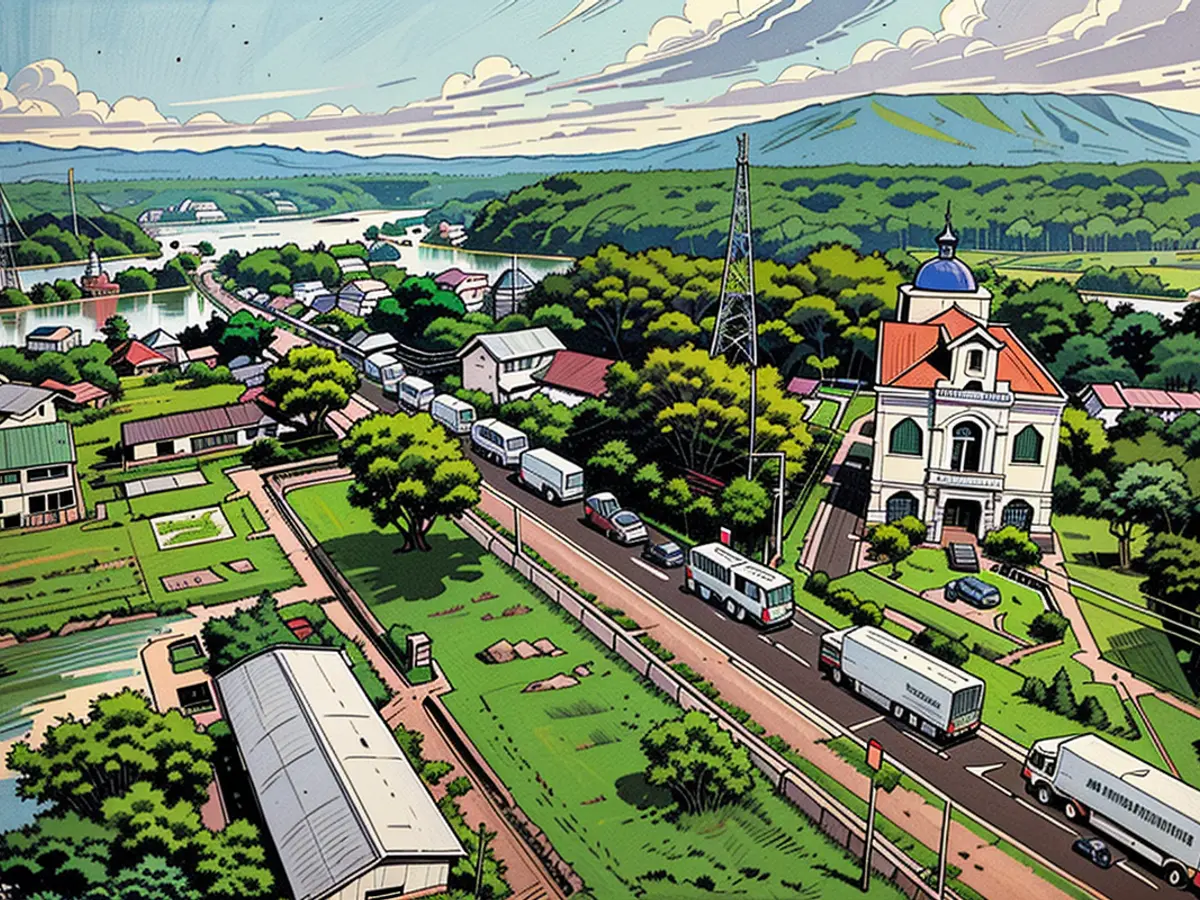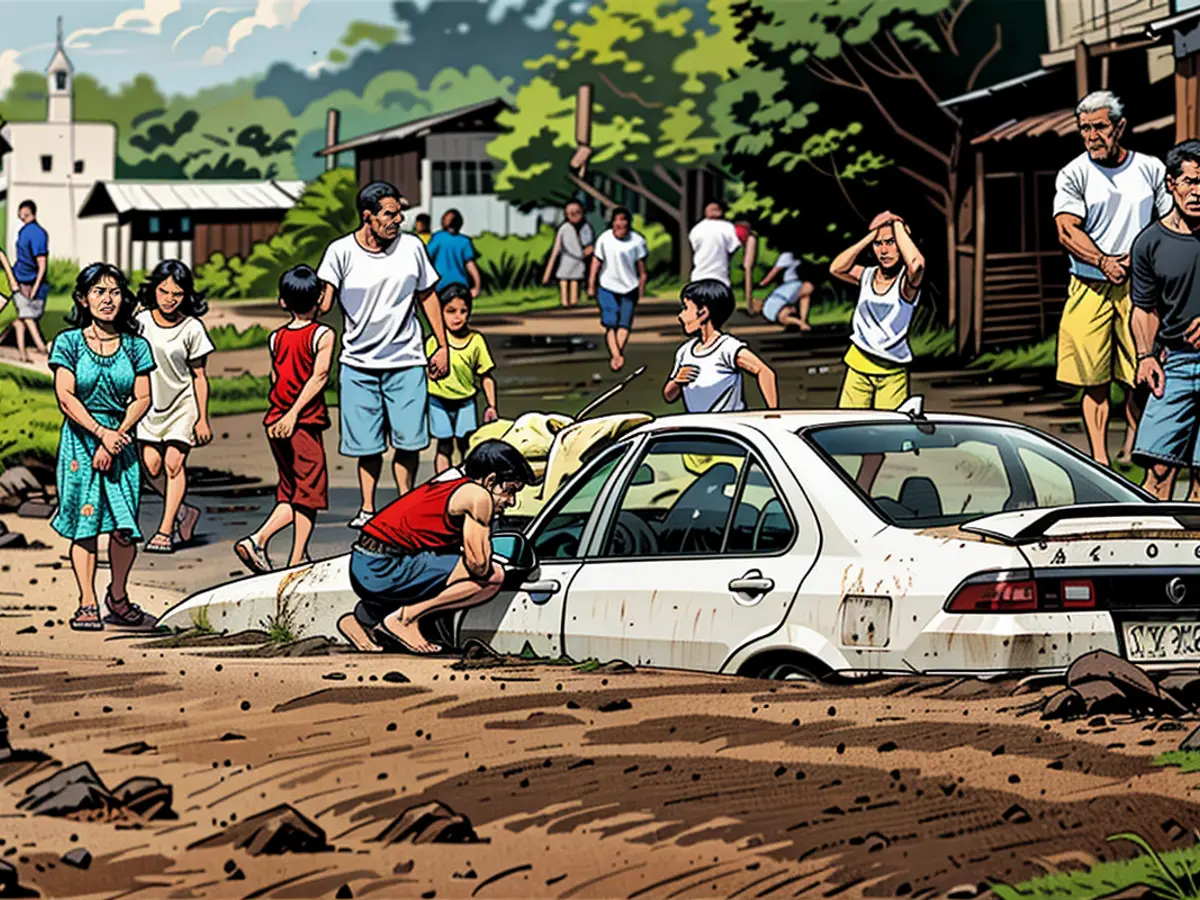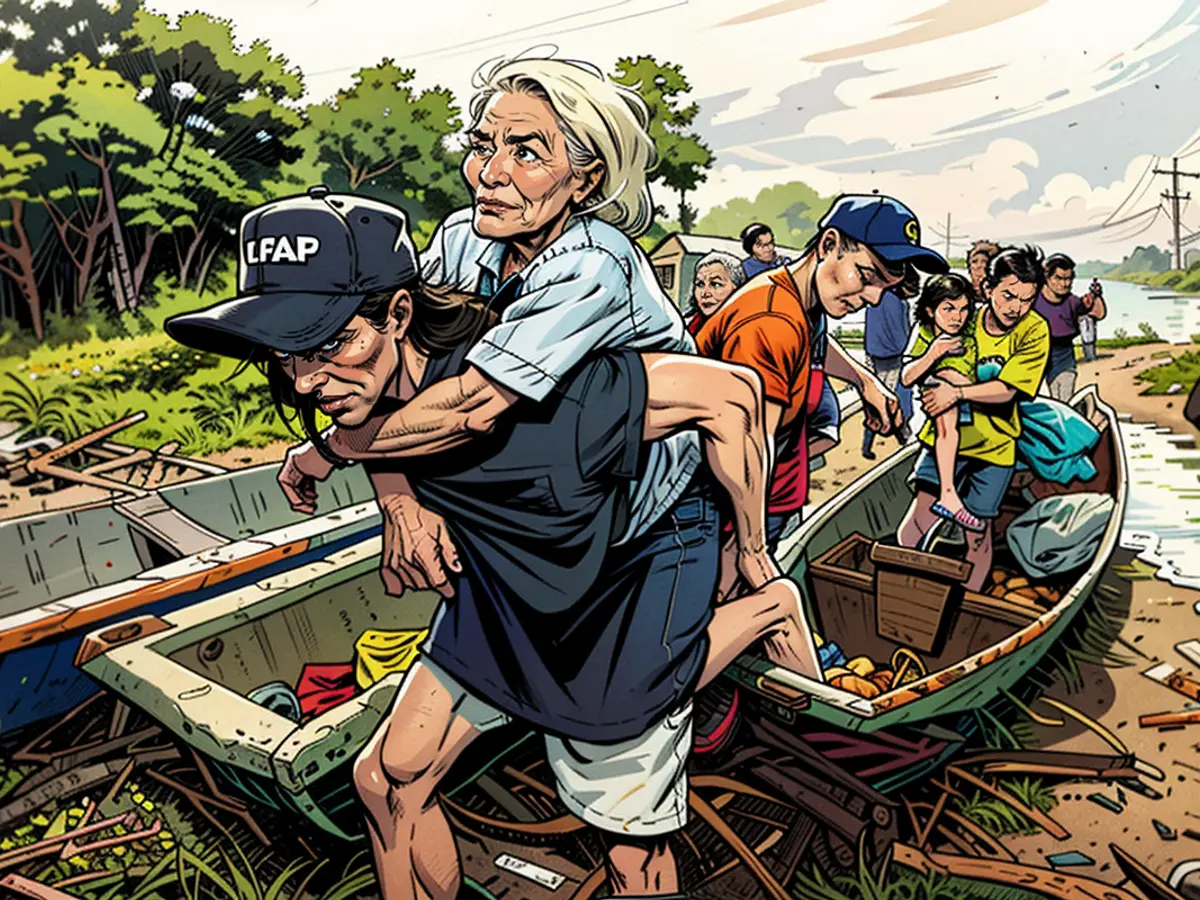Tropical Storm Trami leads to severe flooding and landslides in the Philippines, resulting in at least twenty-four fatalities.
The administration closed down educational establishments and workplaces – excluding those essential for crisis response – across the main island of Luzon for a second day consecutively. This decision was taken to safeguard millions of people following Tropical Storm Trami's impact on the Philippines' northeastern Isabela province post-midnight.
The storm, known locally as Kristine, was causing havoc in Aguinaldo town, situated in Ifugao's mountainous region, after breakfast with winds of up to 95 kph (59 mph) and gusts reaching 160 kph (99 mph). The storm was moving westwards and was predicted to enter the South China Sea by Thursday evening, as per meteorological forecasts.
At least 24 lives were lost primarily due to drowning in the devastated Bicol region and Quezon province. However, authorities estimated the death toll to escalate as reports from flooded towns and obstructed villages, cut off by landslides and fallen trees, started coming in.

The majority of the storm-related fatalities were reported in the Bicol region's six provinces, located southeast of Manila, where at least 20 people perished, including 7 residents of flooded Naga city. The city experienced flash floods as Trami approached earlier this week, discharging over two months' worth of rainfall in a mere 24 hours at high tide, as stated by regional police chief Brig. Gen. Andre Dizon and other authorities.
Despite thousands of people being rescued from submerged communities by government forces, numerous others remained in need of assistance in the Bicol region on Thursday. Approximately 1,500 police officers were deployed for disaster-relief operations, Dizon explained.

"We can't save everyone at once due to the enormous number of people and the requirement for additional watercraft," Dizon informed The Associated Press over the phone. "We're searching for methods to deliver food and water to those who have been trapped but couldn't be evacuated right away."
In certain parts of Naga city, flash floods washed away and submerged automobiles, while mudflows from Mayon, one of the Philippines' 24 active volcanoes, situated in nearby Albay province, submerged numerous vehicles, Dizon added.

Unfavorable weather conditions persisted in the region, impeding emergency efforts, officials affirmed.
The Philippine disaster-mitigation agency reported that over 2 million individuals had been influenced by the storm, with around 75,400 inhabitants being displaced from their homes and seeking refuge on safer ground.

Approximately 20 devastating storms and typhoons strike the Philippines annually. In 2013, Typhoon Haiyan, one of the strongest recorded tropical cyclones worldwide, claimed more than 7,300 lives either directly or indirectly and leveled entire villages.
The storm, after causing havoc in the Philippines, is expected to enter the South China Sea by Thursday evening, potentially impacting other regions in Asia. Despite the Philippines being prone to around 20 devastating storms and typhoons annually, the world continues to watch and offer support during such crises.







